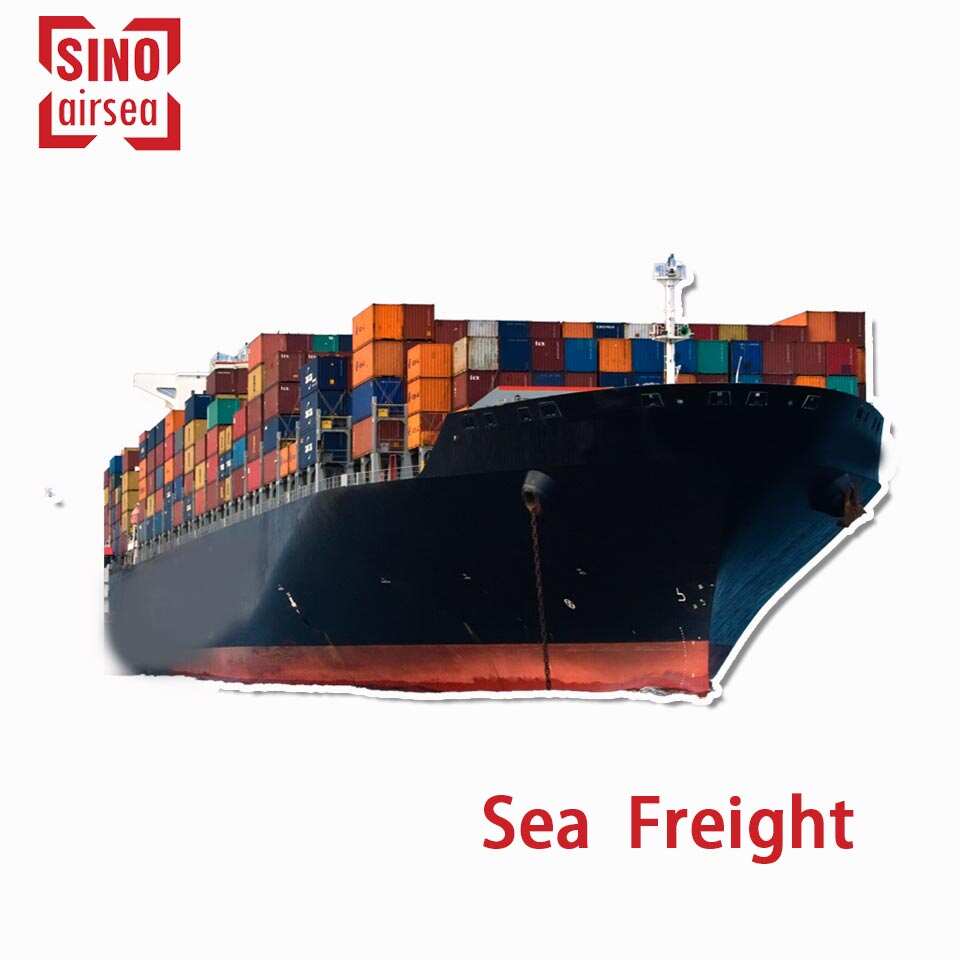Shipping Sea Freight: A Comprehensive Guide to Navigating Global Trade
In today's interconnected world, businesses and individuals rely heavily on international shipping services to transport goods across the globe. Among the most popular and efficient methods of transportation is shipping sea freight. Whether you are a small business owner or part of a large corporation, understanding how sea freight works is essential for optimizing your logistics and ensuring smooth global trade. In this blog, we will dive into the world of shipping sea freight, exploring its key aspects, advantages, and the factors you should consider when choosing a reliable service provider.
What is Shipping Sea Freight?
Shipping sea freight refers to the process of transporting goods by sea, typically in large containers, from one country to another. It is the backbone of international trade, moving a vast majority of the world’s goods across oceans. Sea freight is typically used for bulk goods, large shipments, and products that do not require immediate delivery.
There are two primary methods of shipping sea freight:
Full Container Load (FCL): In FCL, the shipper rents an entire container, ensuring exclusive use of the container for their cargo.
Less than Container Load (LCL): In LCL, shipments from multiple customers are consolidated into one container, and the cost is shared based on the space occupied.
Both methods have their advantages depending on the size of your shipment, your budget, and your delivery timeline.
Why Choose Shipping Sea Freight?
There are several reasons why shipping sea freight remains a preferred choice for transporting goods internationally. Let’s break down the benefits:
Cost-Effectiveness
Sea freight is typically more cost-effective than air freight, especially for large shipments. Businesses dealing with heavy or bulky products such as machinery, raw materials, or consumer goods often choose sea freight to reduce transportation costs. The economies of scale provided by large cargo ships make it a more affordable option for long-distance trade.
Capacity for Large Shipments
One of the biggest advantages is its capacity to handle large and bulky shipments. Containers come in various sizes, with the most common being 20-foot and 40-foot containers. These containers can hold multiple tons of cargo, making them ideal for businesses that need to move large quantities of goods in one go.
Flexibility in Cargo Types
Sea freight is highly versatile in terms of the types of cargo it can handle. From raw materials and machinery to consumer goods and hazardous substances, sea freight can accommodate a wide variety of products. Specialized containers are available for sensitive items, including refrigerated containers for perishable goods and tanks for liquid cargo.
Eco-Friendly Transportation
Compared to air freight, the sea freight produces fewer carbon emissions per ton of cargo transported. This makes sea freight a more environmentally sustainable option, especially for businesses committed to reducing their carbon footprint. Additionally, many shipping companies are investing in cleaner fuel technologies and eco-friendly practices to further reduce the environmental impact of sea freight.
Factors to Consider When Choosing a Sea Freight Provider
With the growing number of international shipping companies, selecting the right provider for your sea freight needs can be a daunting task. Below are some key factors to consider when making your decision:
Reliability and Reputation
It is essential to choose a sea freight provider with a solid reputation and track record for reliability. Look for international sea freight companies that have a history of delivering goods on time and handling cargo with care. Online reviews, testimonials, and case studies can offer valuable insights into the company's performance.
Freight Charges and Hidden Costs
While shipping sea freight is generally cost-effective, it’s important to understand the pricing structure and be aware of any hidden fees. Freight charges are often calculated based on the volume and weight of the shipment, as well as the distance between the port of origin and destination. Additional costs, such as customs duties, port handling fees, and insurance, should also be factored into your budget.
Transit Time
Sea freight is slower than air freight, with transit times ranging from a few days to several weeks, depending on the route. If you have time-sensitive shipments, it’s important to confirm the estimated delivery time and ensure that the sea freight provider can meet your deadlines. Some companies offer expedited services for urgent shipments, though these tend to be more expensive.
Customs Clearance and Documentation
Navigating the complexities of international shipping requires proper documentation and customs clearance procedures. Choose a sea freight provider that has experience handling customs regulations and can guide you through the necessary paperwork, such as bills of lading, commercial invoices, and certificates of origin. This will help prevent delays and ensure that your goods arrive without issues.
Value-Added Services
Some sea freight providers offer value-added services, such as warehousing, packaging, and cargo tracking. These services can streamline your supply chain and provide peace of mind, knowing that your goods are being handled efficiently throughout the entire shipping process.
The Role of Technology in Sea Freight Shipping
In recent years, technology has played a significant role in transforming the sea freight industry. Advancements in digitalization, automation, and real-time tracking have made sea freight more efficient and transparent. Below are some of the key technological innovations shaping the industry:
Real-Time Tracking and Visibility
Modern sea freight companies now offer real-time tracking, allowing businesses to monitor the location and status of their shipments at any point during transit. This increased visibility helps shippers plan for delivery and ensures that any potential issues, such as delays or route changes, can be addressed promptly.
Blockchain for Security and Transparency
Blockchain technology is being increasingly adopted in the sea freight industry to enhance security and transparency. By creating an immutable ledger of transactions, blockchain ensures that all parties involved in the shipping process, including carriers, customs authorities, and shippers, have access to accurate and secure information. This reduces the risk of fraud and improves trust between stakeholders.
Automation and AI
Automation and artificial intelligence (AI) are streamlining many aspects of shipping sea freight, from cargo handling at ports to route optimization. AI-powered tools can analyze vast amounts of data to predict the best shipping routes, minimize fuel consumption, and optimize loading operations, ultimately reducing costs and transit times.
Conclusion: The Future of Shipping Sea Freight
As global trade continues to expand, the demand for efficient and reliable shipping sea freight services will only increase. While sea freight remains one of the most cost-effective and eco-friendly transportation methods, advancements in technology, evolving customer expectations, and a greater focus on sustainability will shape the future of the industry.
Businesses that rely on international shipping should stay informed about the latest trends and innovations in sea freight to remain competitive in the global marketplace. By choosing the right sea freight provider and leveraging the power of technology, companies can streamline their logistics operations and achieve greater efficiency in their supply chains.
In summary, shipping sea freight offers numerous advantages, including cost savings, capacity for large shipments, and flexibility in cargo types. However, selecting the right provider requires careful consideration of factors such as reliability, freight charges, and transit times. With the continued evolution of the industry and the adoption of cutting-edge technology, the future of sea freight looks promising for businesses and consumers alike.


